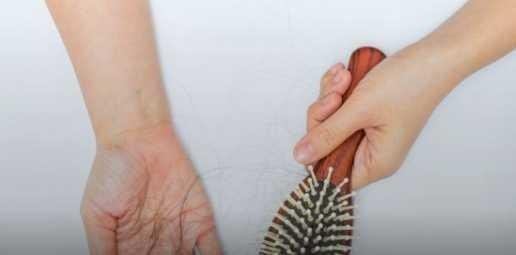Hair loss after childbirth often freaks out women. This condition is feared to cause baldness, thereby reducing their confidence

Actually, hair loss in new mothers is usually something normal and need not worry. This incident will usually afflict women in the first few months after the birth of their child. But over time, this condition will improve and the hair will grow back to normal at least until the first year of the child's age.
This is what happens behind the phenomenon
Actually, hair loss occurs every day and this is a normal hair growth cycle. It's just that, when women go through the process of pregnancy, they don't experience the hair loss cycle as usual. This is because the levels of estrogen in the body experience a surge that prolongs the hair growth phase and fewer hairs experience loss.
That's why during pregnancy, women can have thicker hair than before pregnancy. In other words, the phenomenon of hair loss after childbirth is an event that is closely related to the number of hormones in the body. Don't panic and rush to assume that the body is experiencing nutritional deficiencies or vitamins.
After childbirth, estrogen production returns to normal levels and the hair that should have fallen out will proceed to the normal cycle. That's why the number of hairs that fall out look more than usual. This condition usually takes place in the first few months after giving birth until your child is six months old. In some cases, there are also women who experience this phase for up to a year.
This is the Right Way to Face the Conditions
Instead of frantically facing hair loss after giving birth, women are advised to do some hair care actions like this.
Treat hair gently
When facing hair loss after giving birth, treating hair gently can at least reduce its severity. The gentle treatment includes applying a hairstyle that is less pressure. For that, avoid braiding, ponytailing, and tying ponytail hair. Also make sure to gently comb your hair, especially when your hair is wet after shampooing, because at this time the hair condition is more fragile so it is prone to fall out or break.
Reduce the use of dryers and hair straighteners
In order for hair to avoid further damage, reducing the use of dryers and hair straighteners can be a major consideration. If you feel uncomfortable because of wet hair, make sure the tool used is set at a lower level of effectiveness.
Be careful when using conditioner
The use of conditioner can make hair look weak and 'fall', making it look thinner. Apply conditioner only to the ends of the hair and temporarily avoid being affected by the scalp. Related to this need, try to use a type of conditioner that is dedicated to the treatment of thin hair.
Use a thickening hair shampoo
In order to anticipate hair loss after childbirth, try to use a thicker hair shampoo. This type of product, generally has a useful protein lining the hair. In addition to this type, shampoo and conditioner containing biotin and silica are also predicted to help women pass through this phase that is considered worrying.
There is no harm in trying a new hairstyle
The phase of hair loss after childbirth is probably the right time to try a new hairstyle. The freshness of the charm of a new hairstyle may be able to improve the mood that is clearly being uncomfortable in these times.
Colouring hair
Getting around hair loss after giving birth can also be done by coloring the hair. This will be a good camouflage in covering hair loss.
Add accessories to the hair
Disguise the thinning of hair due to hair loss with a headband, scarf, or bandana can form its own style that looks cooler.
Eating healthy foods
To help hair growth again, prioritize eating foods that contain vitamins B, C, E, biotin, and zinc. This group of nutrients is well known for supporting hair and nail growth.
If the technique of overcoming or getting around hair loss after giving birth above is still not able to relieve the heart, it is advisable to consult a doctor in order to get more effective medical treatment.